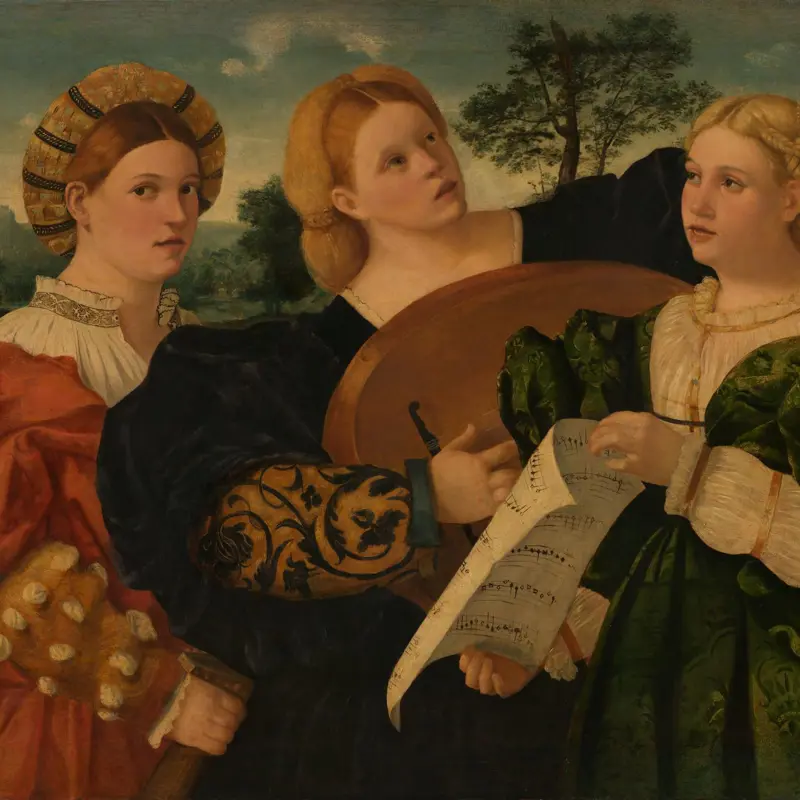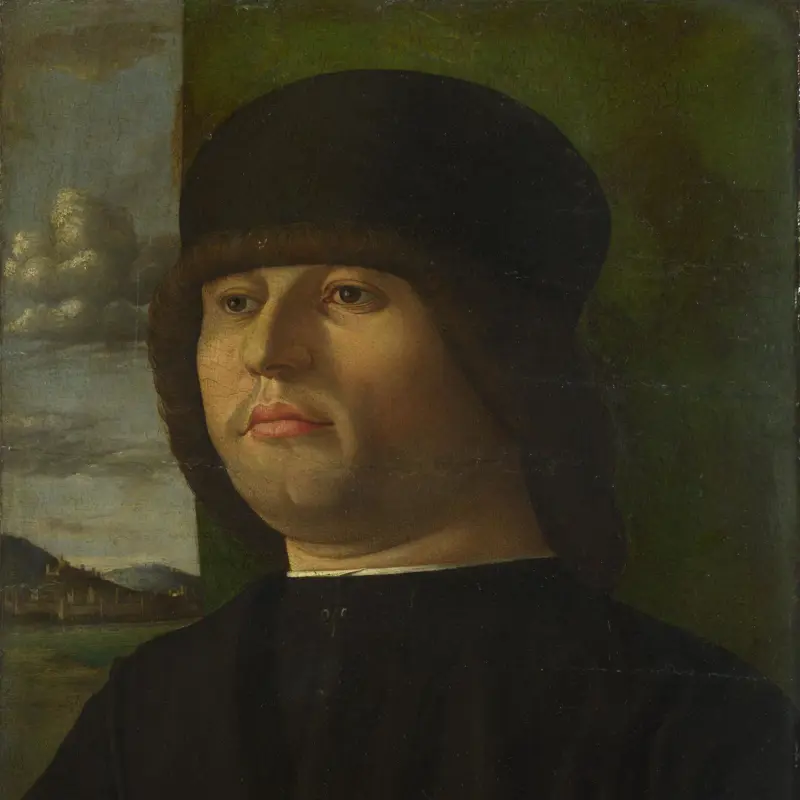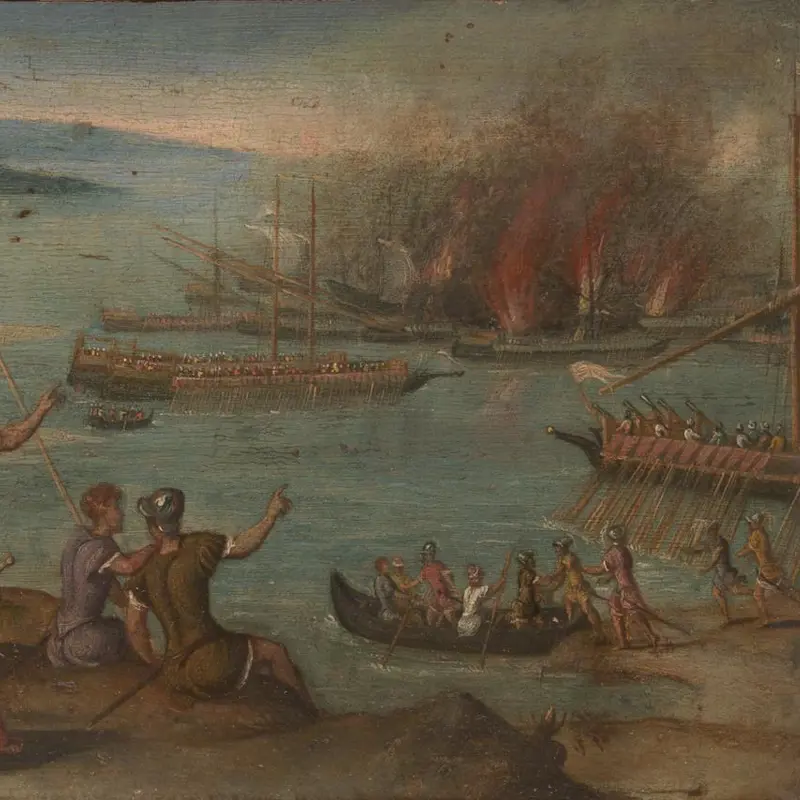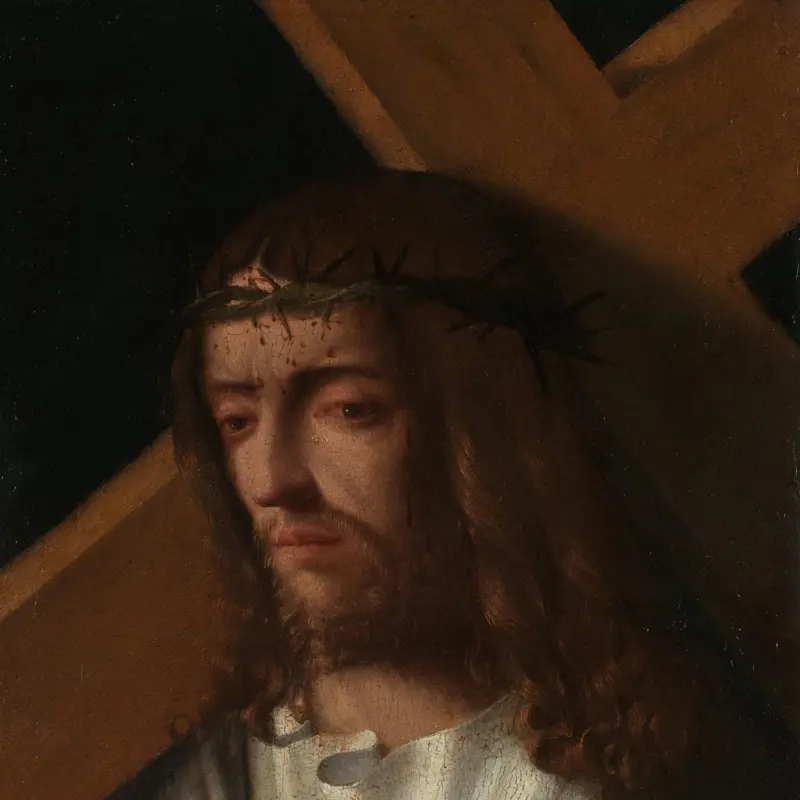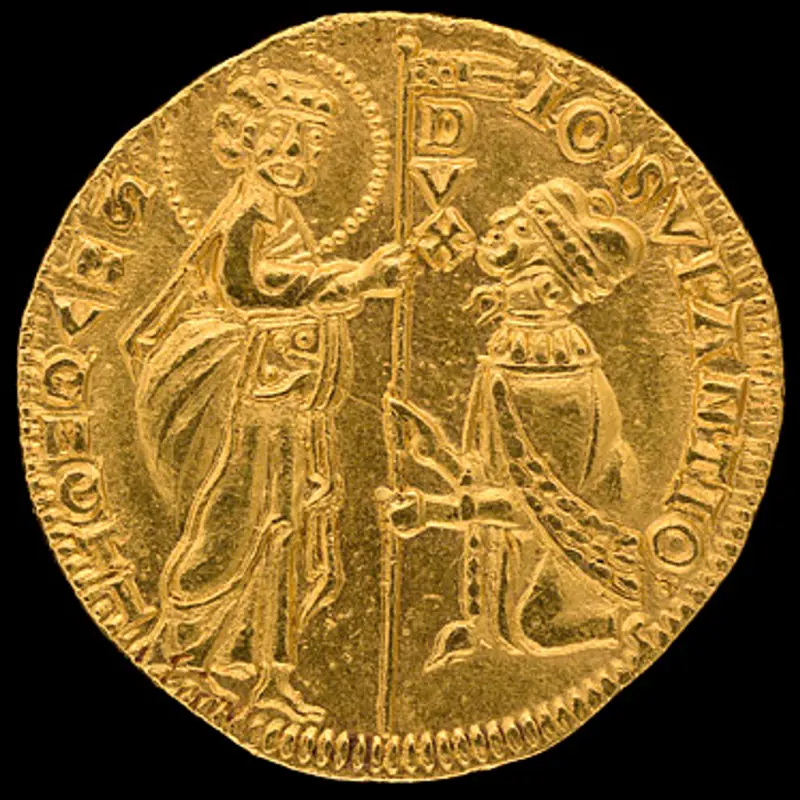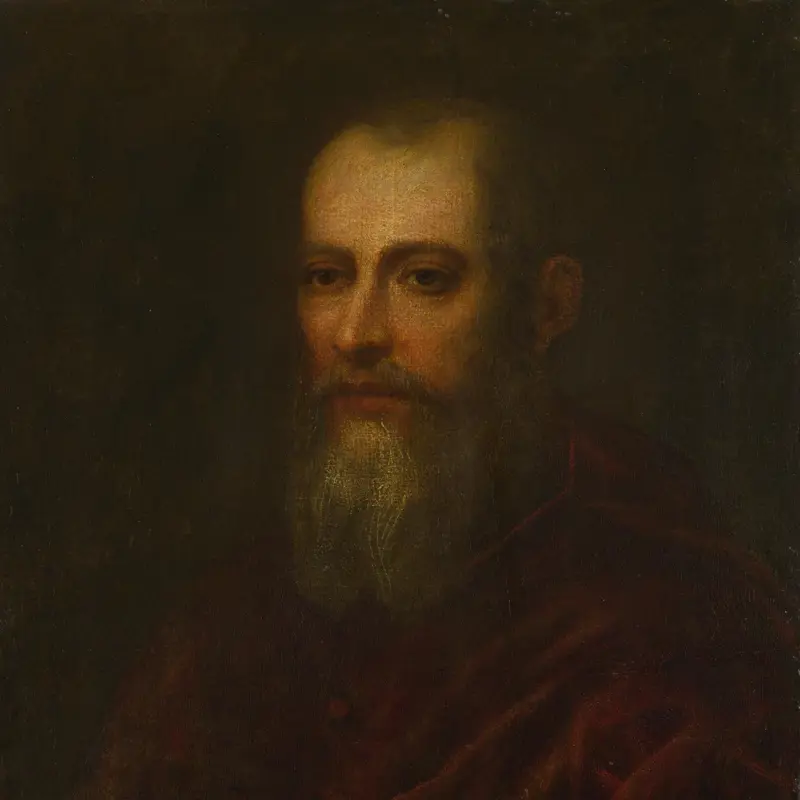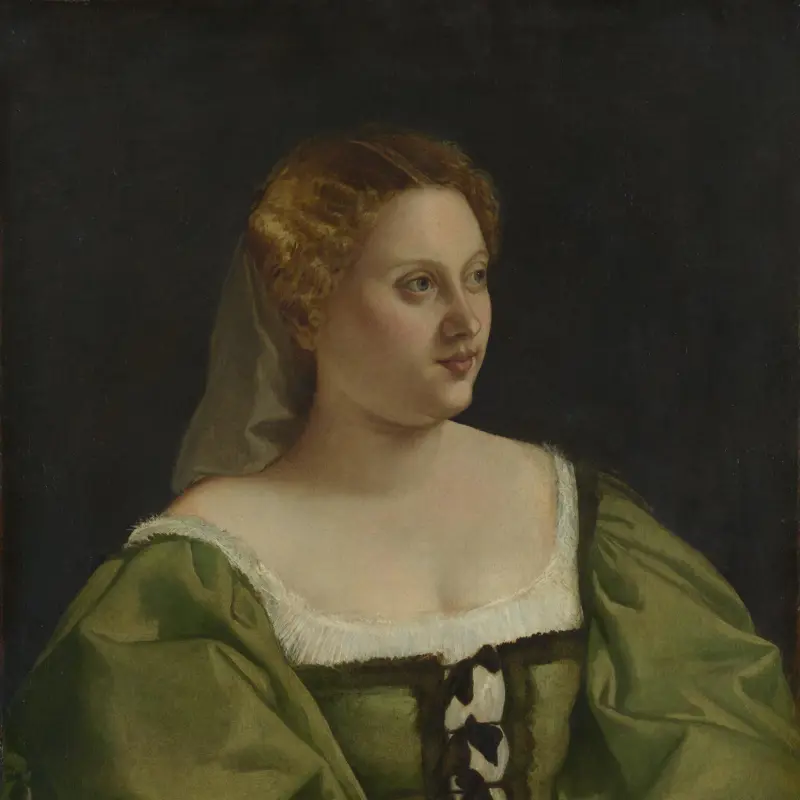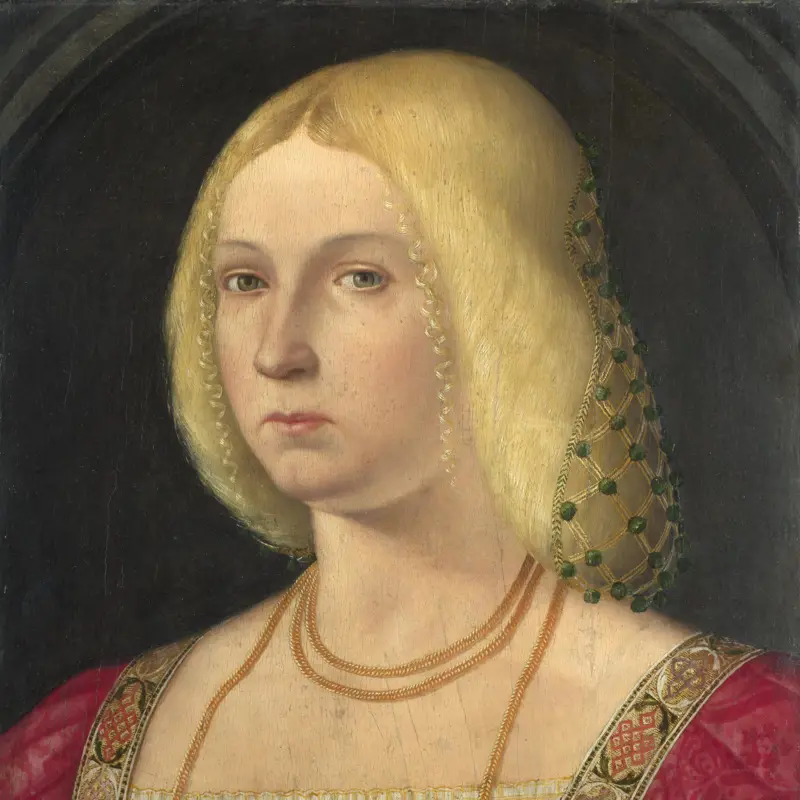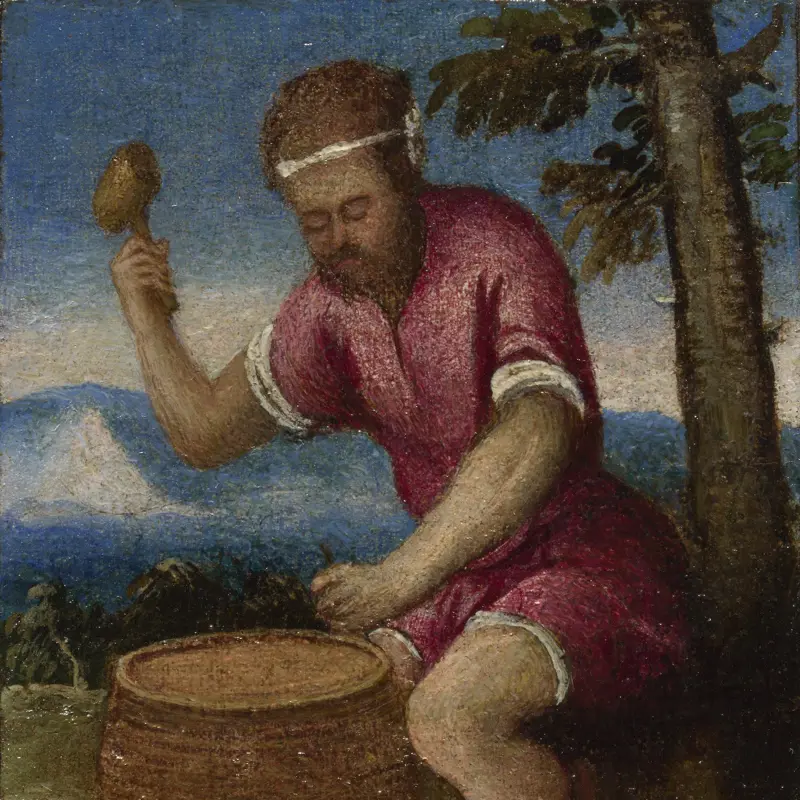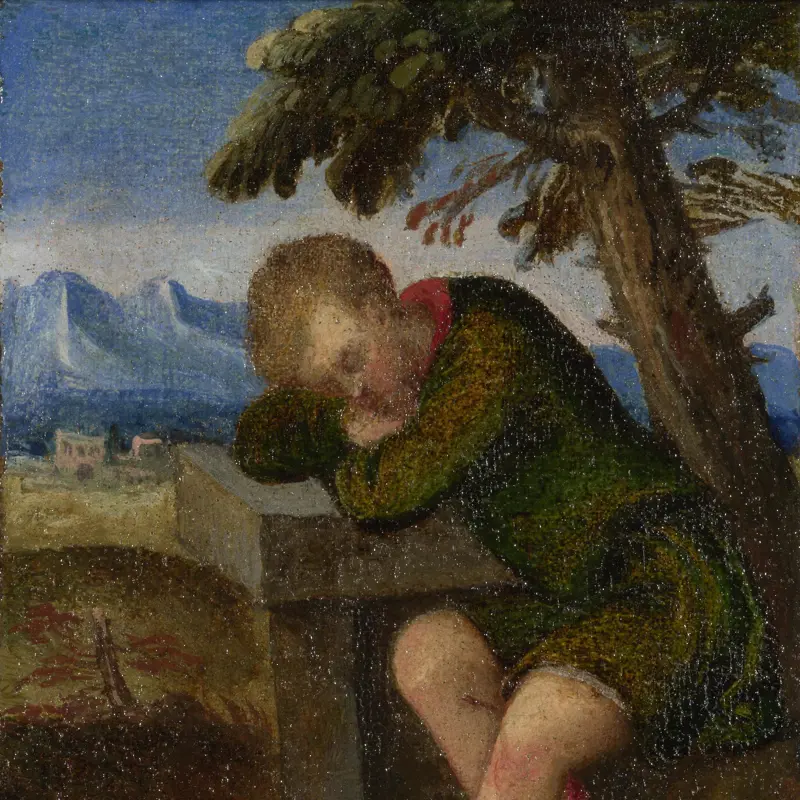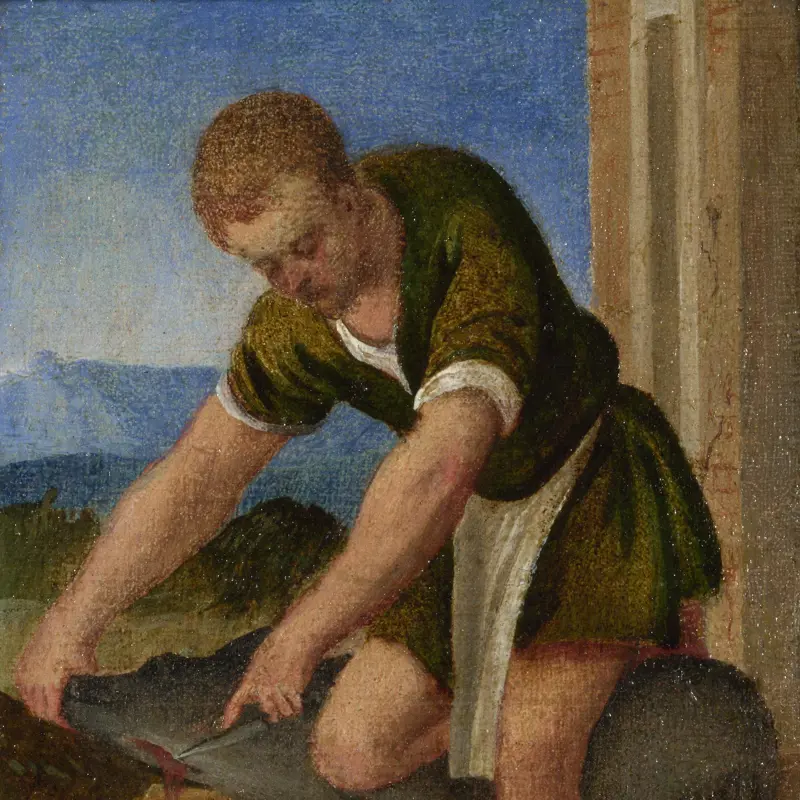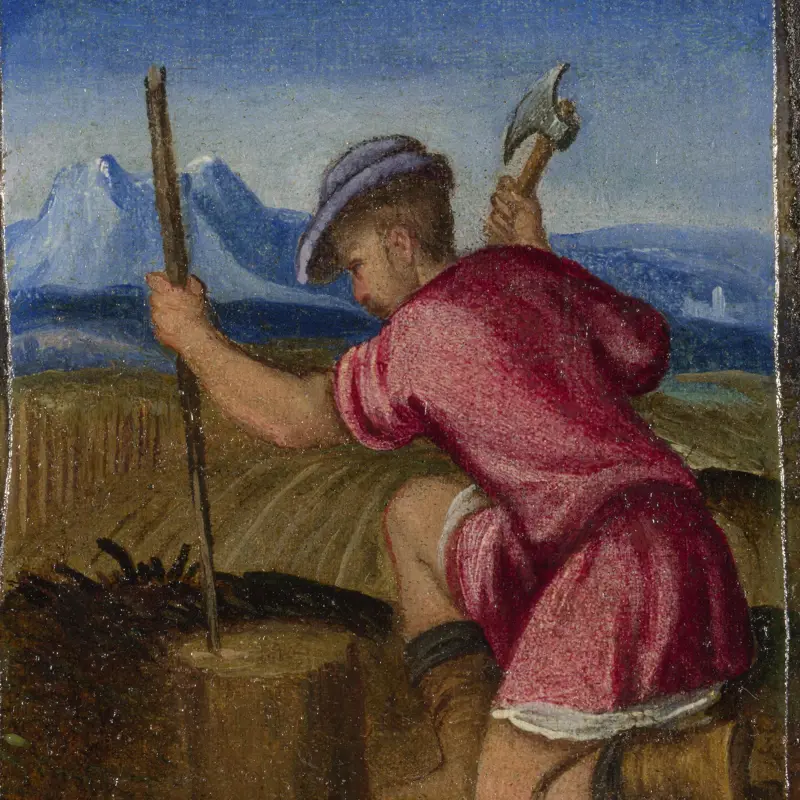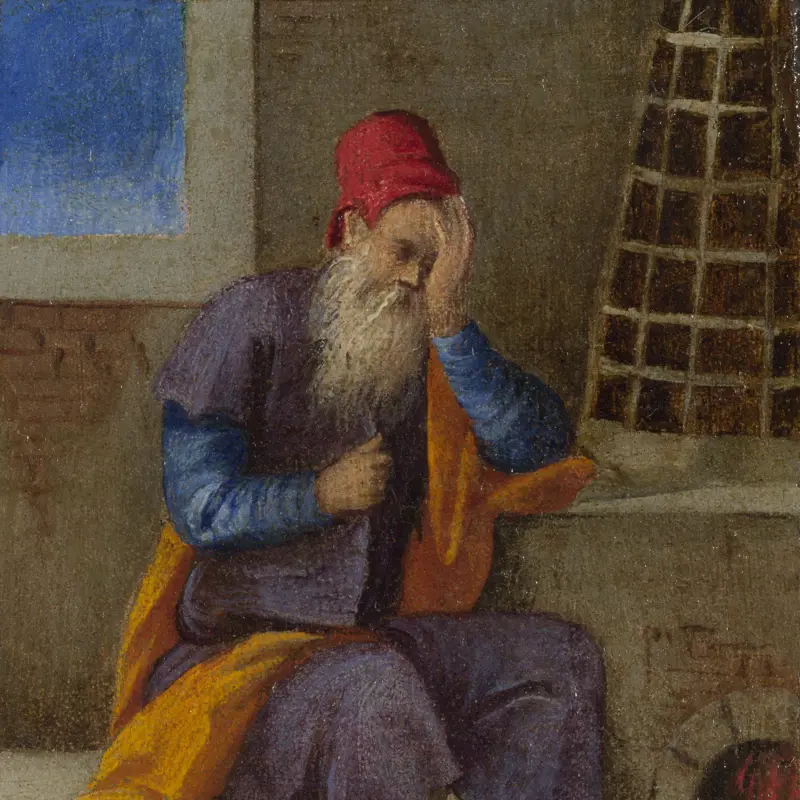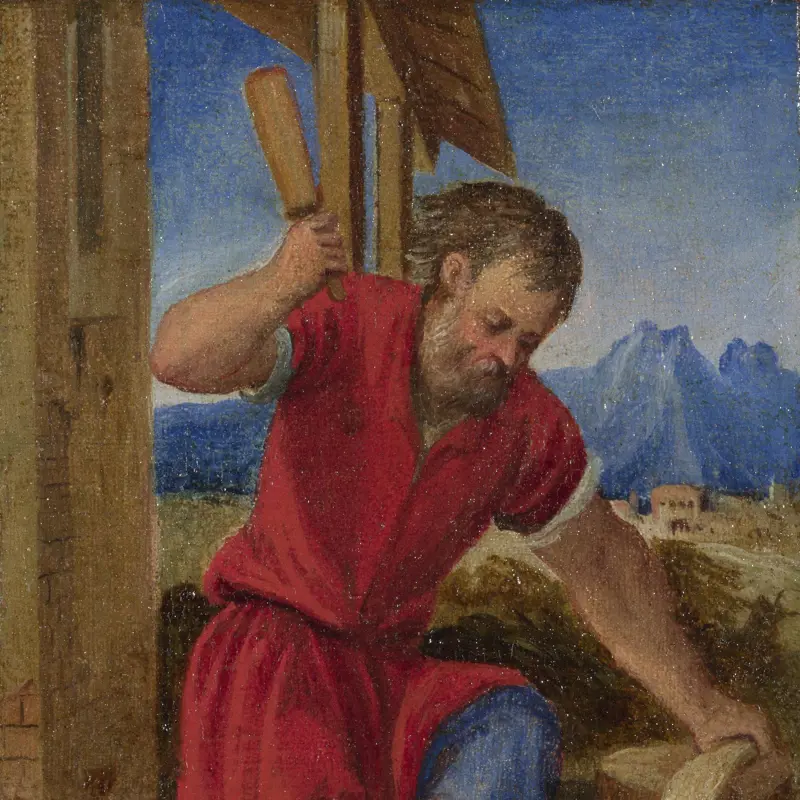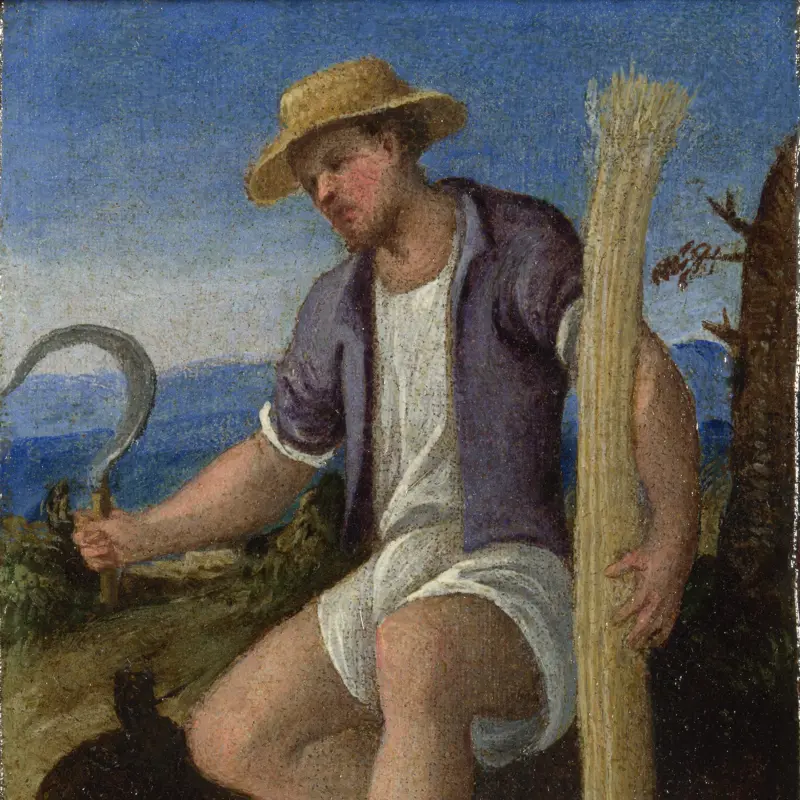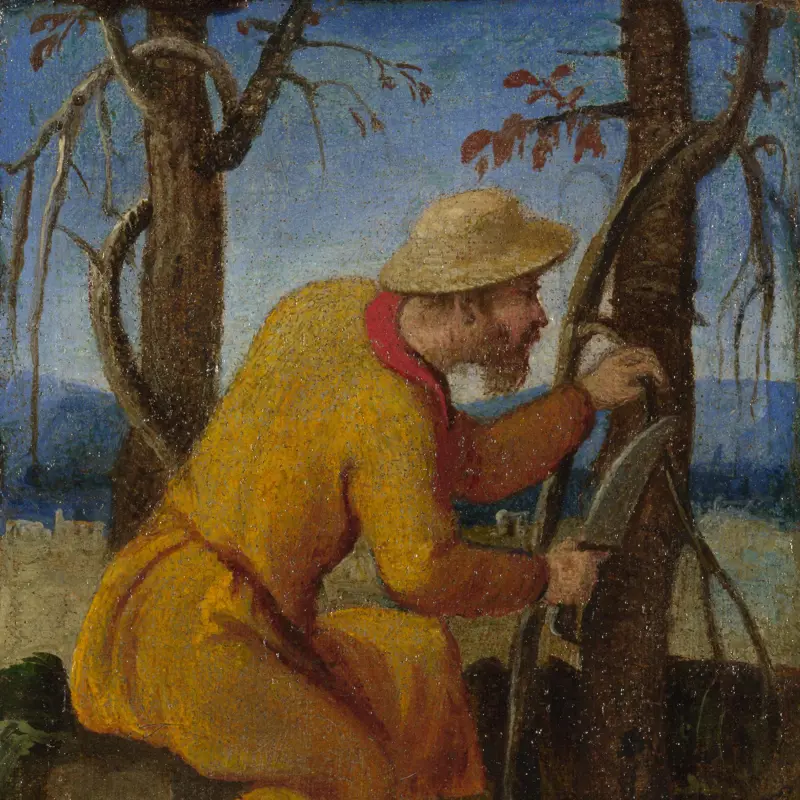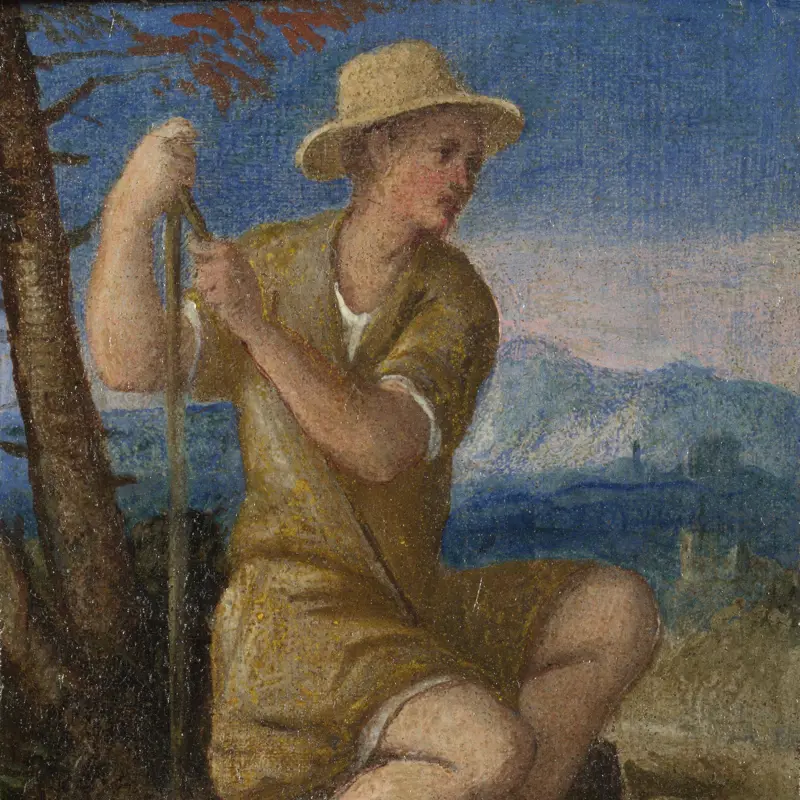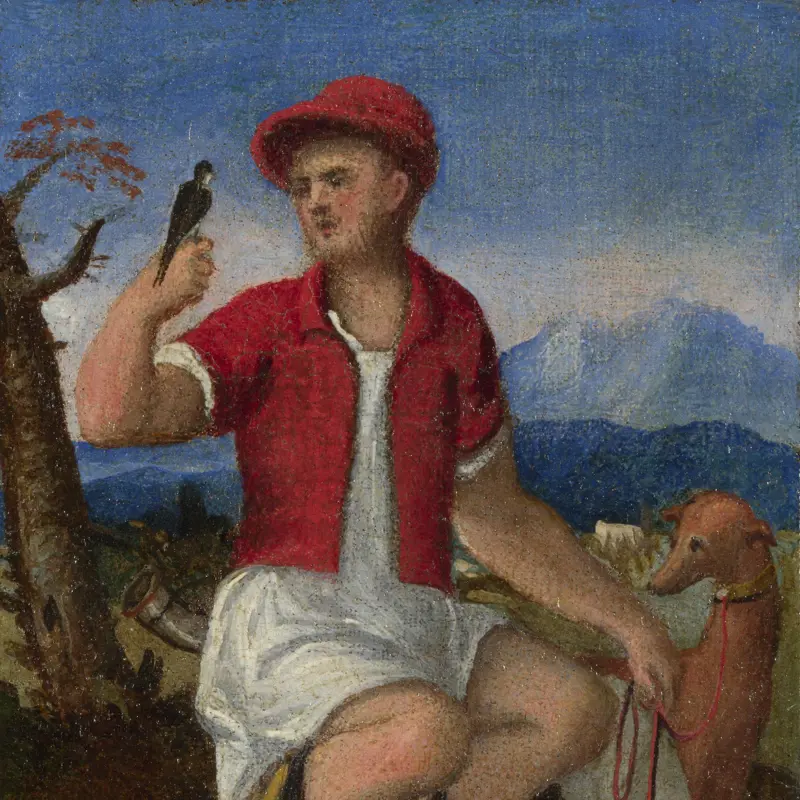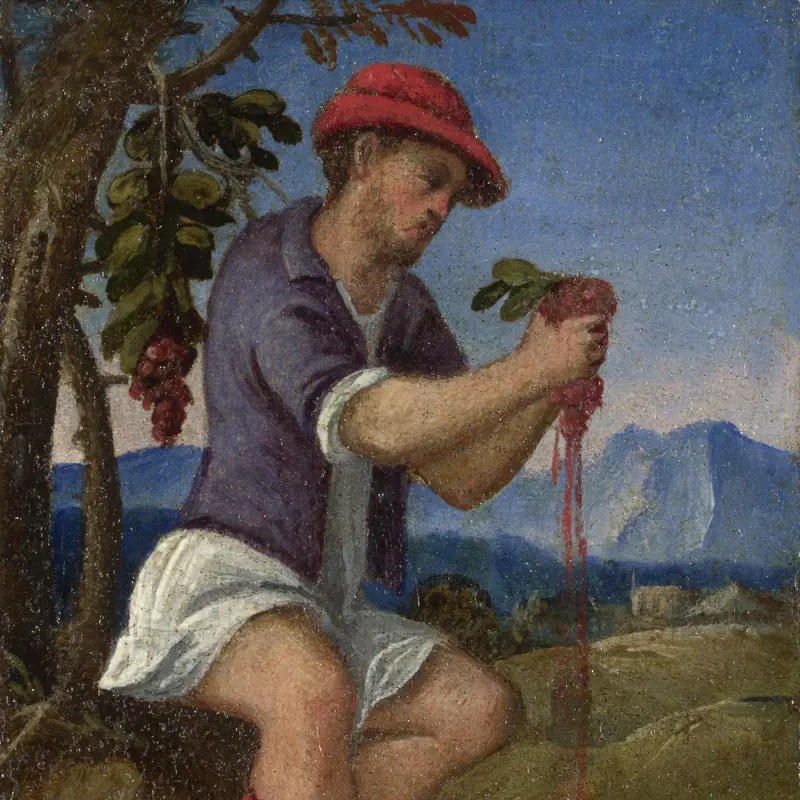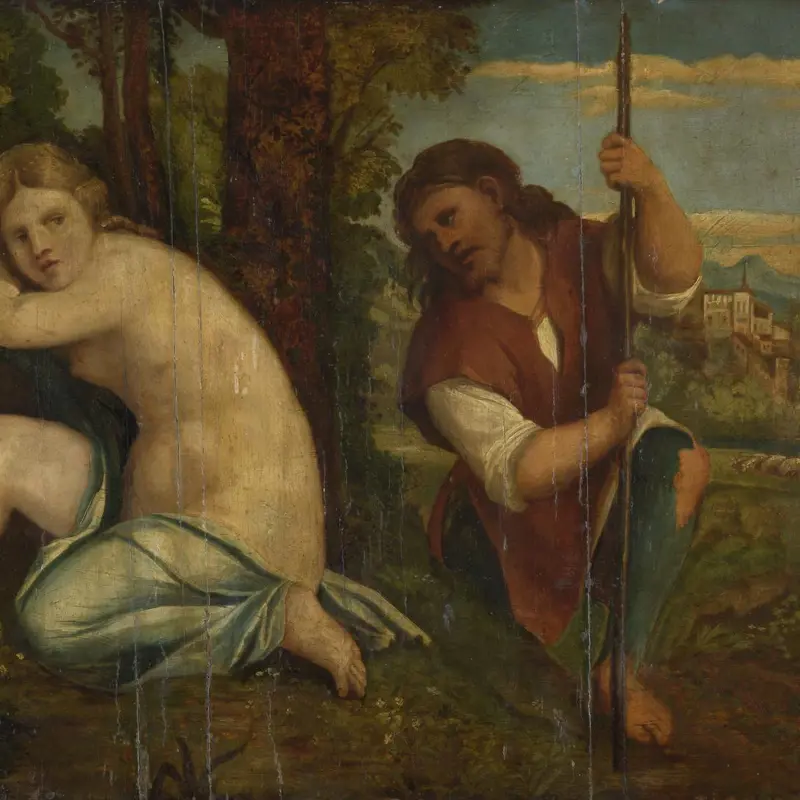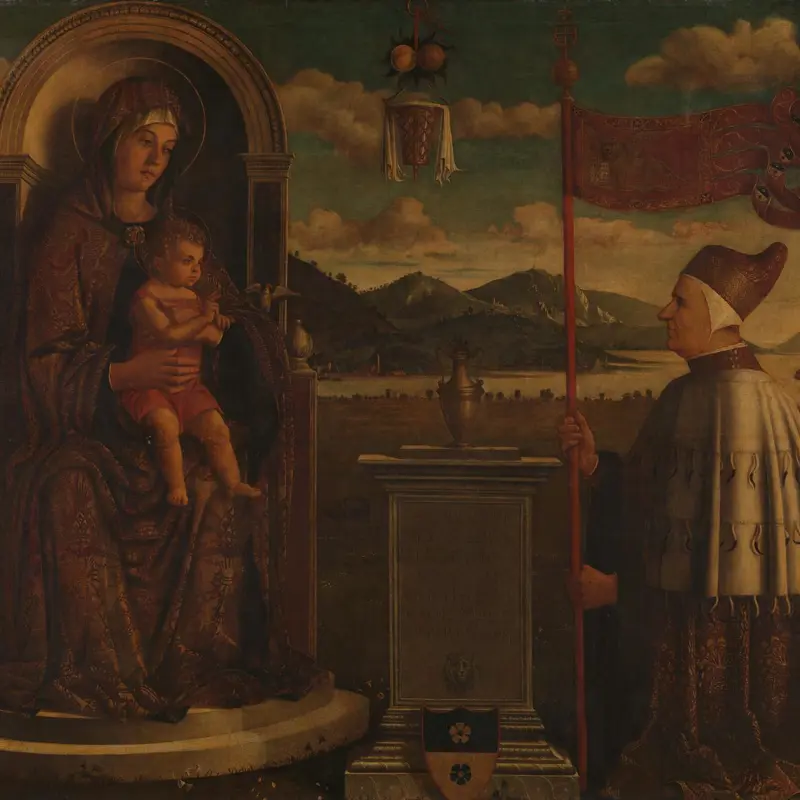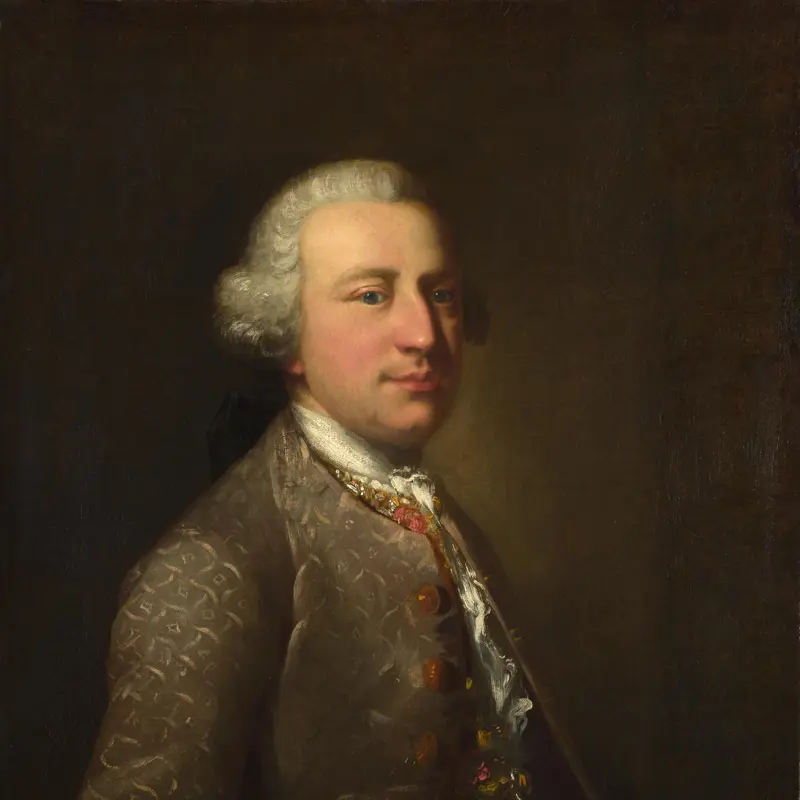Italian, Venetian (?), 'An Apostle, Saint, Prophet or Sage', probably late 16th century
About the work
Overview
This picture is a fragment of a larger painting for the spandrel of an arch (the triangular area beside the arch). There would have been another figure in a complementary pose on the other side of the arch. The painting consists of five separate pieces of canvas, which were probably originally glued to a wooden support. The architectural elements were probably painted by a specialist and then joined to the piece with the figure when the picture was put in place.
The proportions of the figure, the projecting knee and the scale and breadth of the painting style suggest that the picture was intended to be placed very high up where small details would not have be seen. It may have been placed over an arch at the entrance to a chapel.
The unidentified figure looks down and clasps a round shaft, possibly part of a large key or staff. He may be a prophet or ancestor of Christ from an Old Testament story, which would have prefigured the New Testament subject matter in the chapel below.
Key facts
Details
- Full title
- An Apostle, Saint, Prophet or Sage
- Artist
- Italian, Venetian (?)
- Date made
- probably late 16th century
- Medium and support
- oil on canvas
- Dimensions
- 152 × 116.2 cm
- Acquisition credit
- Presented by Cavaliere Vallati, 1855
- Inventory number
- NG272
- Location
- Not on display
- Collection
- Main Collection
- Previous owners
Provenance
Additional information
Text extracted from the ‘Provenance’ section of the catalogue entry in Nicholas Penny, ‘National Gallery Catalogues: The Sixteenth Century Italian Paintings’, vol. 2, ‘Venice 1540–1600’, London 2008; for further information, see the full catalogue entry.
Bibliography
-
1959Gould, Cecil, National Gallery Catalogues: The Sixteenth Century Venetian School, London 1959
-
1987Gould, Cecil, National Gallery Catalogues: The Sixteenth Century Italian Schools, London 1987
-
2001
C. Baker and T. Henry, The National Gallery: Complete Illustrated Catalogue, London 2001
-
2008Penny, Nicholas, National Gallery Catalogues: The Sixteenth Century Italian Paintings, 2, Venice, 1540-1600, London 2008
About this record
If you know more about this work or have spotted an error, please contact us. Please note that exhibition histories are listed from 2009 onwards. Bibliographies may not be complete; more comprehensive information is available in the National Gallery Library.

